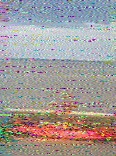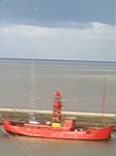www.rhci-online.net/radiogram/radiogram.htm
██╗██████╗ ██████╗ ██████╗ █████╗ ██████╗ ██╗ ██████╗ ██████╗ ██████╗ █████╗ ███╗ ███╗
██║██╔══██╗██╔════╝ ██╔══██╗██╔══██╗██╔══██╗██║██╔═══██╗██╔════╝ ██╔══██╗██╔══██╗████╗ ████║
██║██████╔╝██║ ██████╔╝███████║██║ ██║██║██║ ██║██║ ███╗██████╔╝███████║██╔████╔██║
██║██╔══██╗██║ ██╔══██╗██╔══██║██║ ██║██║██║ ██║██║ ██║██╔══██╗██╔══██║██║╚██╔╝██║
██║██████╔╝╚██████╗ ██║ ██║██║ ██║██████╔╝██║╚██████╔╝╚██████╔╝██║ ██║██║ ██║██║ ╚═╝ ██║
╚═╝╚═════╝ ╚═════╝ ╚═╝ ╚═╝╚═╝ ╚═╝╚═════╝ ╚═╝ ╚═════╝ ╚═════╝ ╚═╝ ╚═╝╚═╝ ╚═╝╚═╝ ╚═╝
RSID: <<2016-08-24T20:30Z
MFSK-32
@ 6070000-1500>>
START START
QUESTA E' IBC, ITALIAN BROADCASTING CORPORATION
TRASMISSIONI IN ITALIANO:
MERCOLEDI' 20-22 UTC 6070 KHZ
VENERDI' 01-01.30 UTC 9955 KHZ
SABATO 01.30-02 UTC 11580 KHZ
website: HTTP://WWW.IBCRADIO.WEBS.COM
email: IBC@EUROPE.COM
"IBC DIGITAL" "IBC DIGITAL" "IBC DIGITAL"
OGNI MERCOLEDI' 20.30-21.00 UTC 6070 KHZ IN MFSK 32 (1500 Hz) E IN OLIVIA 16-500
(2200 Hz)
OGNI VENERDI' 01.25-01.30 UTC 9955 KHZ IN MFSK32
OGNI SABATO 01.55-02 UTC 11580 KHZ IN MFSK32
BUONA DECODIFICA!
.
.
Sending Pic:500x347C;
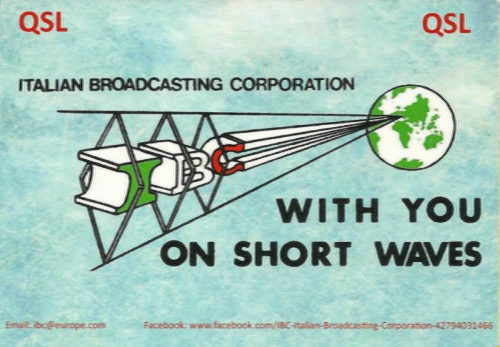
.
"IBC DIGITAL" "IBC DIGITAL"
SWITCH NOW TO OLIVIA 16-500(2200 Hz)
RSID: <<2016-08-24T20:40Z
OL 16-500
@ 6070000-2200>>
START START
"DX ITALIA DX NEWS" by I2MQP
ON NOW OR WIITHIN NEXT WEEK ---- IN ARIA ORA O ENTRO UNA SETTIMANA
5A Libya NOW 5A1AL is often on HF QSL W5UE
5Z Kenya Now - Aug end JM1CAX is on /5Z4 QSL H.C.
6W Senegal NOW KG4KCT as 6W4AA QSL H.C. dir
7X Algeria Aug 17 - Aug 20 7V9A group from AF-064
8T Antartica Now - Dec 2016 VU3BPZ as BT2BH QSL I1HYW
9A Croatia Aug 1 - Sep 30 PA4JJ is on /9A QSL OQRS
A5 Bhutan Aug 22 - Aug 27 JA3ARJ,JH3LSS,JH7EQW and JH3AEF as
A52ARJ,A52LSS,A52EQW and A52AEF QSL H.C. dir & bur
C9 Mozambique NOW - Mar 2017 PD0JBH is now on as C91PA QSL H.C. & LoTW
CY St. Paul Aug 19 - Aug 29 CY9C by a 11 operators group with 2 different
stations QSL WA4DAN OQRS
D6 Comoros Sep 18 - Sep 30 5 OK as D55D QSL OK6DJ & LoTW
F France Aug 27 - Sep 3 4 ON from EU-081 as TM6U
FO F.Polynesia Aug 17 - Aug 28 DL2AH from OC-063 as TX2AH QSL H.C.
HL Korea Aug 24 - Aug 26 D73G group from AS-060 QSL HL4CEL
I Italy Aug 31 - Sep 9 IK5WWA will be from EU-025 as IA5C QSL H.C.
JA Japan Aug 27 JA4GXS will be /4 from AS-117 QSL H.C dir & bur
JD Ogasawara Aug 23 - Aug 28 JD1YBV will be on QSL Bur& dir JA1HQG
JD Minami Torishima Aug - Sep JG8NQJ will be /8 QSL JA8CJY dir JG8NQJ bur
JT Mongolia Aug 30 - Sep 24 OK1DBS as JT1DBS & JT1DBS/3 QSL H.C.
KH6 Hawaii Aug 5 - Aug 26 F4GHS will be /KH6 from the Big Island QSL H.C. dir
T8 Palau Aug 18 - Aug 25 T8GJ will be on 6 meters EME QSL W7GJ dir only
TK Corsica Aug 21 - Sep 4 MW1LCR will be /TK QSL e-QSL
UA Russia Jun 3 - Sep 3 RI1C team from EU-133 group QSL RW1F OQRS
V3 Belize Now - Oct end PA0C will sign V31HV & V31HV/p QSL H.C. dir
V6 Micronesia Aug 29 - Sep 3 V6M will be on 6 meters QSL W7GJ dir only
VE Canada Aug 21 - Sep 2 VE2DVG will be on from NA-038
VE Canada Aug 26 - Aug 29 KD6WW & K9AJ will be /VYO from NA-159 & NA-196 QSL
K9AJ dir/bur OQRS
VP6 Pitcairn Aug 25 - Sep 3 JA2FJP & jf2MBF as VP6J QSL JF2MBF OQRS
XX9 Macau Aug 20 - Sep 4 IK7YTT as XX9TYT QSL IW7EGQ
YJ Vanatu Jul 25 - Aug 20 YJ8RN as /p from OC-110 QSL NZ4DX
YJ Vanatu Aug 21 - Sep 21 KC0W as YJ0COW QSL H.C. dir
YV0 Aves Aug 31 - Sep 10 W4DTA and YV operators as YX0V QSL W4DTA OQRS
ZA Albania Aug 26 - Aug 30 IZ7GXB will be /ZA QSL H.C.
END
"DX ITALIA DX NEWS" by I2MQP
"IBC DIGITAL"
END
██████╗ ██╗ ██████╗ ██╗██████╗ ██╗ ██╗ ███████╗██╗ ██╗████████╗██████╗ █████╗
██╔══██╗██║██╔════╝ ██║██╔══██╗╚██╗██╔╝ ██╔════╝╚██╗██╔╝╚══██╔══╝██╔══██╗██╔══██╗
██║ ██║██║██║ ███╗██║██║ ██║ ╚███╔╝ █████╗ ╚███╔╝ ██║ ██████╔╝███████║
██║ ██║██║██║ ██║██║██║ ██║ ██╔██╗ ██╔══╝ ██╔██╗ ██║ ██╔══██╗██╔══██║
██████╔╝██║╚██████╔╝██║██████╔╝██╔╝ ██╗ ███████╗██╔╝ ██╗ ██║ ██║ ██║██║ ██║
╚═════╝ ╚═╝ ╚═════╝ ╚═╝╚═════╝ ╚═╝ ╚═╝ ╚══════╝╚═╝ ╚═╝ ╚═╝ ╚═╝ ╚═╝╚═╝ ╚═╝
RSID: <<2016-08-20T02:31Z
MFSK-32
@ WINB-1500>>
Hello and welcome to the extra version of DigiDX 25, a weekly review of the
latest shortwave and DX news broadcast experimenting with various digital
modes. This broadcast includes shortwave news and the e-QSL card.
We will start with this week's e-QSL. This time a larger image 780x446 px
will be transmitted, in the faster MFSK64 digital mode. Right after the
eQSL broadcast, we will switch to the slower Olivia 8-1000 mode, at about
58 wpm, on 2200 Hz.
DigiDX now changes to MFSK64 ...
RSID: <<2016-08-20T02:32Z
MFSK-64
@ WINB-1500>>
Sending Pic:780x446;
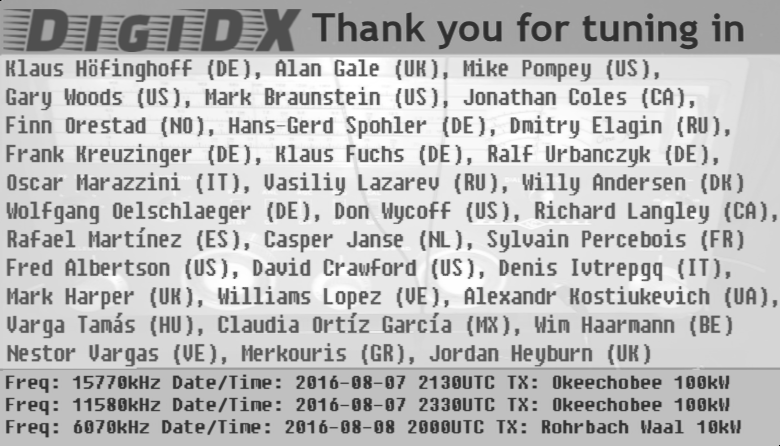
RSID: <<2016-08-20T02:41Z
OL 8-1K
@ WINB-1500>>
... This is DigiDX in Olivia 8-1000.
DigiDX weekly schedule:
Sunday 1830 - 6070kHz via Channel 292 (Rohrbach Wall, DE) *
Sunday 2130 - 15770kHz via WRMI (Okeechobee, FL, USA)
Sunday 2330 - 11580kHz via WRMI (Okeechobee, FL, USA)
Monday 2000 - 6070kHz via Channel 292 (Rohrbach Wall, DE)
* Shorter version testing slower digital modes against co-channel QRM.
Any other extra broadcasts will be listed on http://www.digidx.uk
If you enjoy DigiDX and find the service useful please consider donating
via Paypal to reports@digidx.uk or via our Patreon page. Any money
donated will go towards paying for airtime to keep DigiDX on the air to
Europe and North America.
Every donation will help no matter how little
-https://www.patreon.com/digidx. /
reports@digidx.uk
=== LATEST SHORTWAVE NEWS ===
RADIO AUSTRALIA OFF THE AIR AND EXPECTED RETURN THIS WEEKEND
Many shortwave listeners across the world have noticed that Radio Free
Australia has not been on any of its shortwave frequencies since around
the 4th of August.
Although scheduled maintenance sometimes is carried out at Shepperton
which is Radio Australia’s only remaining transmissions site, rumours
of technical problems and contractual disputes were also mentioned as
possible reasons for this time off the air.
On the 10th of August, some listeners who had contacted ABC were sent an
email stating that “We are currently working with our transmission
provider on a number of shut downs over the past week and again over the
next week to investigate a range of technical and commercial issues for
the service“ and also advising listeners of the availability of Radio
Australia on satellites Intelsat IS18 and IS22 targetting the South
Pacitfic area.
On the 16th of August, Radio Australia started replying to queries about
their SW service on their Facebook page with the following response
“"Hi there, the ABC is running a technical outage of the Radio
Australia service until Friday the 19th of August to test reception in
the region. Sorry for any inconvenience caused."
Next week's DigiDX will include news on the return of Radio Australia
and if it does come back on shortwave on the 19th of August. However the
strange wording of the reply on Facebook has led some shortwave
listeners to ask if “running a technical outage” and “testing
reception in the region” is actually a way of testing how many
listeners are actually tuning into Radio Australia in the target area
rather an actual technical problems.
WRMI SHOWCASE DIGITAL MODES VIA ANALOG RADIO
Anyone tuning in to last week's DigiDX will have heard a different
broadcast than normal as DigiDX’s regular programme was replaced by a
special WRMI digital modes broadcast.
The aim of the broadcast which was transmitted 10 times from Friday -
Tuesday was to demonstrate digital mode broadcasting at the upcoming
HFCC conference in Miami by showing delegates videos of the programme
being decoded.
The special broadcast was created by Kim Andrew Elliott from VOA
Radiogram and included MFSK32, MFSK64, Olivia 64-2000, various images,
segmentrs with 1500Hz and 2200Hz centre frequencies and a test with
music playing in the background.
It is hoped that delegates at the HFCC conference, which includes most
of the major international shortwave broadcasts, will be encouraged to
add digital mode parts to their own shortwave transmissions.
RADIO GUINEA CONAKRY BACK ON SHORTWAVE
Radio Guinea (Conakry) which returned to shortwave for several days back
in April has again come back to shortwave this for longer having been on
the air from the 5th of August and still on air on the 16th August.
It is unclear if this is related to the Olympics which has featured in
the broadcasts in French and local languages but it is good to see the
station back on shortwave.
The 9650kHz transmissions seem to be on the air 24 hours a day and have
been heard in Europe and North America.
EXTENDED REE TRANSMISSIONS FOR THE OLYMPICS
REE have been having some extended coverage of the Olympics in Spanish
passed their normal 2200 signoff time. 15390kHz, 15500kHz. 17715kHz and
17855kHz have stayed on the air until 0000 (or perhaps later) several
days in the last two weeks.
RADIO FREE ASIA CELEBRATES 20 YEARS OF BROADCASTING
Article from http://www.rfa.org/english/
Radio Free Asia (RFA) announces its 20th anniversary QSL. Bringing free
press to closed societies, RFA’s first broadcast was in Mandarin on
September 29, 1996 at 2100 UTC. RFA is a private, nonprofit corporation
broadcasting news and information to listeners in Asian countries where
full, accurate, and timely news reports are unavailable. Acting as a
substitute for indigenous free media, RFA concentrates coverage on
events occurring in and/or affecting Burma, Cambodia, Laos, North Korea,
the People’s Republic of China, and Vietnam. RFA does not express
editorial opinions but provides news, analysis, commentary, and cultural
programming in the languages of the country of broadcast. This design is
RFA’s 62nd QSL and is used to confirm all valid reception reports from
September – December 2016.
RFA encourages listeners to submit reception reports. Reception reports
are valuable to RFA as they help us evaluate the signal strength and
quality of our transmissions. RFA confirms all accurate reception
reports by mailing a QSL card to the listener. RFA welcomes all
reception report submissions at http://techweb.rfa.org (follow the QSL
REPORTS link) not only from DX’ers, but also from its general
listening audience Reception reports are also accepted by email at
qsl@rfa.org and by mail to: Reception Reports Radio Free Asia 2025 M.
Street NW, Suite 300 Washington DC 20036 United States of America.
PAUL WALKER EXPERIENCE DIGITAL MODES
Paul Walker has confirmed that his upcoming shortwave broadcasts will
include MFSK32 text and images in the transmissions over the weekend of
the 26th / 27th of August. Paul has said that the show will be “2
hours of rock n roll music with maybe a few country songs thrown in for
good measure” and the full schedule is now confirmed below:
WRMI 7570kHz Saturday August 27th 0400 to 0600UTC. Beaming at 315
degrees towards Vancouver. It should provide a good signal to the West
Coast of the US and Canada and probably parts of the midwest and upper
midwest along the way.
WRMI 11580kHz Friday August 26th 2100 UTC to 2300UTC. This signal
target area is Eastern North America and Western Europe.
WRMI 11530kHz Saturday August 27th, 0200UTC to 0400UTC targeting
South America with maybe a little spill over to extreme Western Africa.
WINB 9265kHz Saturday August 27th 0330 to 0530UTC. This
should provide good coverage into the Midwest, parts of southern Canada,
into Mexico along with parts of Central & Southern Europe it seemed. It
was weakly heard in Australia and New Zealand during the last broadcast.
Channel 292 6070kHz Friday August 26th 2200 to 2400UTC. This should
provide good coverage of central and parts of Western Europe.
Shortwave Services 15195khz via Armenia Saturday August 27th 1200 to 1400UTC.
Beaming at 65 degrees towards Japan.
Thanks to Channel 292 for this extra broadcasts of DigiDX 25.
http://www.channel292.de
Please send reception reports to reports@digidx.uk
and we welcome listeners on
our WINB test broadcast.
This is DigiDX signing off ...
██████╗ ██╗ ██████╗ ██╗ ██████╗ ██╗ ██╗
██╔══██╗██║██╔════╝ ██║ ██╔══██╗╚██╗██╔╝
██║ ██║██║██║ ███╗██║ ██║ ██║ ╚███╔╝
██║ ██║██║██║ ██║██║ ██║ ██║ ██╔██╗
██████╔╝██║╚██████╔╝██║ ██████╔╝██╔╝ ██╗
╚═════╝ ╚═╝ ╚═════╝ ╚═╝ ╚═════╝ ╚═╝ ╚═╝
RSID: <<2016-08-22T20:00Z
MFSK-32
@ 6070000-1500>>
Hello and welcome to DigiDX 25 a weekly review of the latest shortwave
and DX news broadcast mainly in MFSK32 mode. This broadcast includes
shortwave news and the e-QSL card,
DigiDX weekly schedule:
Sunday 2130 - 15770kHz via WRMI (Okeechobee, FL, USA)
Sunday 2330 - 11580kHz via WRMI (Okeechobee, FL, USA)
Sunday 1830 - 6070kHz via Channel 292 (Rohrbach Wall, DE)
Monday 2000 - 6070kHz via Channel 292 (Rohrbach Wall, DE)
To buy shortwave time from Channel 292 at very reasonable prices go to
http://www.channel292.de or from WRMI from http://www.wrmi.net/
Any other extra broadcasts will be listed on http://www.digidx.uk
If you enjoy DigiDX and find the service useful please consider donating
via Paypal to reports@digidx.uk or via our Patreon page. Any money
donated will go towards paying for airtime to keep DigiDX on the air to
Europe and North America.
Every donation will help no matter how little
-https://www.patreon.com/digidx. /
reports@digidx.uk
Thanks very much to listeners Oscar Marazzini, Alan Gale, Jordan
Heyburn, Fred Albertson, Mike Stapp, Mark Braunstein and Richard Langley
for contributing via Paypal or to the Patreon campaign.
Latest Shortwave News:
Radio Australia off the air and expected return
WRMI showcase digital modes via analog radio
Radio Guinea Conakry back on shortwave
Extended REE transmissions for the Olympics
Radio Free Asia celebrates 20 years of broadcasting
Paul Walker Experience Digital Modes
Radio Australia off the air and expected return this weekend
Many shortwave listeners across the world have noticed that Radio Free
Australia has not been on any of its shortwave frequencies since around
the 4th of August.
Although scheduled maintenance sometimes is carried out at Shepperton
which is Radio Australia’s only remaining transmissions site, rumours
of technical problems and contractual disputes were also mentioned as
possible reasons for this time off the air.
On the 10th of August, some listeners who had contacted ABC were sent an
email stating that “We are currently working with our transmission
provider on a number of shut downs over the past week and again over the
next week to investigate a range of technical and commercial issues for
the service“ and also advising listeners of the availability of Radio
Australia on satellites Intelsat IS18 and IS22 targetting the South
Pacitfic area.
On the 16th of August, Radio Australia started replying to queries about
their SW service on their Facebook page with the following response
“"Hi there, the ABC is running a technical outage of the Radio
Australia service until Friday the 19th of August to test reception in
the region. Sorry for any inconvenience caused."
Next week's DigiDX will include news on the return of Radio Australia
and if it does come back on shortwave on the 19th of August. However the
strange wording of the reply on Facebook has led some shortwave
listeners to ask if “running a technical outage” and “testing
reception in the region” is actually a way of testing how many
listeners are actually tuning into Radio Australia in the target area
rather an actual technical problems.
WRMI showcase digital modes via analog radio
Anyone tuning in to last week's DigiDX will have heard a different
broadcast than normal as DigiDX’s regular programme was replaced by a
special WRMI digital modes broadcast.
The aim of the broadcast which was transmitted 10 times from Friday -
Tuesday was to demonstrate digital mode broadcasting at the upcoming
HFCC conference in Miami by showing delegates videos of the programme
being decoded.
The special broadcast was created by Kim Andrew Elliott from VOA
Radiogram and included MFSK32, MFSK64, Olivia 64-2000, various images,
segmentrs with 1500Hz and 2200Hz centre frequencies and a test with
music playing in the background.
It is hoped that delegates at the HFCC conference, which includes most
of the major international shortwave broadcasts, will be encouraged to
add digital mode parts to their own shortwave transmissions.
Radio Guinea Conakry back on shortwave
Radio Guinea (Conakry) which returned to shortwave for several days back
in April has again come back to shortwave this for longer having been on
the air from the 5th of August and still on air on the 16th August.
It is unclear if this is related to the Olympics which has featured in
the broadcasts in French and local languages but it is good to see the
station back on shortwave.
The 9650kHz transmissions seem to be on the air 24 hours a day and have
been heard in Europe and North America.
Extended REE transmissions for the Olympics
REE have been having some extended coverage of the Olympics in Spanish
passed their normal 2200 signoff time. 15390kHz, 15500kHz. 17715kHz and
17855kHz have stayed on the air until 0000 (or perhaps later) several
days in the last two weeks.
Radio Free Asia celebrates 20 years of broadcasting
Article from http://www.rfa.org/english/
Radio Free Asia (RFA) announces its 20th anniversary QSL. Bringing free
press to closed societies, RFA’s first broadcast was in Mandarin on
September 29, 1996 at 2100 UTC. RFA is a private, nonprofit corporation
broadcasting news and information to listeners in Asian countries where
full, accurate, and timely news reports are unavailable. Acting as a
substitute for indigenous free media, RFA concentrates coverage on
events occurring in and/or affecting Burma, Cambodia, Laos, North Korea,
the People’s Republic of China, and Vietnam. RFA does not express
editorial opinions but provides news, analysis, commentary, and cultural
programming in the languages of the country of broadcast. This design is
RFA’s 62nd QSL and is used to confirm all valid reception reports from
September – December 2016.
RFA encourages listeners to submit reception reports. Reception reports
are valuable to RFA as they help us evaluate the signal strength and
quality of our transmissions. RFA confirms all accurate reception
reports by mailing a QSL card to the listener. RFA welcomes all
reception report submissions at http://techweb.rfa.org (follow the QSL
REPORTS link) not only from DX’ers, but also from its general
listening audience Reception reports are also accepted by email at
qsl@rfa.org and by mail to: Reception Reports Radio Free Asia 2025 M.
Street NW, Suite 300 Washington DC 20036 United States of America.
Paul Walker Experience Digital Modes
Paul Walker has confirmed that his upcoming shortwave broadcasts will
include MFSK32 text and images in the transmissions over the weekend of
the 26th / 27th of August. Paul has said that the show will be “2
hours of rock n roll music with maybe a few country songs thrown in for
good measure” and the full schedule is now confirmed below:
WRMI 7570kHz Saturday August 27th 0400 to 0600UTC. Beaming at 315
degrees towards Vancouver. It should provide a good signal to the West
Coast of the US and Canada and probably parts of the midwest and upper
midwest along the way.
WRMI 11580kHz Friday August 26th 2100 UTC to 2300UTC. This signal
target area is Eastern North America and Western Europe. WRMI 11530kHz
Saturday August 27th, 0200UTC to 0400UTC targetting South America with
maybe a little spill over to extreme Western Africa.
WINB 9265kHz Saturday August 27th 0330 to 0530UTC. This
should provide good coverage into the Midwest, parts of southern Canada,
into Mexico along with parts of Central & Southern Europe it seemed. It
was weakly heard in Australia and New Zealand during the last broadcast.
Channel 292 6070kHz Friday August 26th 2200 to 2400UTC. This should
provide good coverage of central and parts of Western Europe.
Shortwave Services 15195khz via Armenia Saturday August 27th 1200 to 1400UTC.
Beaming at 65 degrees towards Japan.
Upcoming relays and special broadcasts:
VOA Radiogram will be on air this weekend on the following frequencies,
for more information on the modes to be used visit
http://voaradiogram.net/
Sat 0930-1000 5745 kHz
Sat 1600-1630 17580 kHz
Sun 0230-0300 5745 kHz
Sun 1930-2000 15670 kHz
After a summer break Gilles Létourneau who runs the excellent
OfficialSWLchannel channel on Youtube is back with two radio related
Hangouts this week. They will be on Friday 19th at 2100 and Saturday
20th August at 2000UTC.
To watch the hangouts or any of his videos go to
https://www.youtube.com/user/OfficialSWLchannel
Now we have an update from RTL-SDR.com on their new RTL-SDR V3 which is the
first of their popular RTL-SDR branded USB stick with built in HF support
for shortwave listening.
A few months ago we brought out a poll asking readers of this blog what
they might like to see in a revised RTL-SDR dongle. We’ve now taken
some of those suggestions and implemented them into a brand new dongle.
For now the price of the new dongle will remain the same as before at
$24.95 USD for the dongle + antenna kit and $19.95 USD for the dongle
only, but we may need to increase the price by $1 – $2 within the next
few weeks due to our slightly increased manufacturing costs. Worldwide
shipping remains free from the Chinese international warehouse, and US
customers can order either from the Chinese international warehouse or
from Amazon who will give you free shipping if you are a Prime member,
or spend over $49. The Chinese warehouse is currently stocked and ready
to ship, and Amazon is now stocked and should be ready to ship by the
end of this week.
Please go to our store page at
rtl-sdr.com/store for information on
purchasing.
Here is the short version of the biggest changes:
1) HF support via direct sampling. Connect an HF antenna directly to the
SMA connector and tune from 500 kHz – 24 MHz with the
direct sampling
mod. (No
hardware modding or soldering required)
2) Lower internal noise. Less spurs, lower noise floor etc.
3) Software switchable bias tee. No need to do any soldering to enable the bias
tee.
Can be
turned on and off in software.
We call this version three of our RTL-SDR Blog dongles. The first was
version zero and was simply the standard MCX dongles with better
antennas. Next came version 1 with the bias tee and SMA connector, and
version two introduced the metal case.
Here is the long list of improvements and changes, and why they were
made:
1) Improved ESD protection on the radio front end. The BAV99 diode which
is used on
most dongles is not a true ESD rated diode. We have added a
real ESD
rated diode for better protection. The BAV99 remains in the
circuit as a
strong signal clipper, to prevent damage to the R820T2 from
overly
strong signals. Please remember that not even this will save your
radio from a
lightning strike, and any permanently outdoor mounted
antenna
system must have its own lightning protection.
2) Longer SMA connector. One or two customers had problems with the
shorter SMA
plugs which could not fit some of their antenna connectors.
The longer
shaft fixes this and also allows us to add a nut to fasten it
to the
aluminum body which provides a better low impedance connection
(although
this is not strictly needed as the PCB side ground tracks
already
provide a good connection).
3) Improved front end circuit. The standard matching circuit on the
RTL-SDR was
designed for DVB-T use, and tends to attenuate signals above
~1 GHz. The
new matching circuit has less attenuation above 1 GHz and
similar
performance below. We used very high quality, high SRF, high Q
inductors in
this circuit.
4) Added a software switchable 4.5v bias tee. In previous versions of
our units
the 4.5v bias tee needed to be activated manually, by
soldering
a bridge between two pads on the PCB. However we found that
many
customers who want to use the bias tee do not have the skills or
tools to be
able to perform this mod. The new unit makes use of a low
noise LDO
and one of the GPIO pins on the RTL2832U to activate the bias
tee in
software. This of course requires a modification to the drivers,
but we will
shortly upload a program called rtl_biast and batch files to
turn the
bias tee on and off in Windows and Linux.
This bias
tee is great for powering a remote LNA (like Adams PSA5043+
based
LNA4ALL) or something like the SpyVerter upconverter. We’ve
tested it
with both and found them to be running just fine.
Warning: The
bias tee LDO can be damaged if you short circuit it. Before
turning on
the bias tee, ensure the circuit to be powered is not
shorted, or
that the RTL-SDR is not connected to a DC shorted antenna!
5) Added several access pads on the PCB. Access pads for the unused
GPIO pins,
CLK in/out, 3.3V, GND and I2C pins have been added. The CLK
input/output
is disconnected by default (see change 6). Access pads for
the I branch
have also been added as some users and industrial customers
are using
these in special projects. These pads are only for advanced
users who
need them for special projects. Take care as these pins are
not ESD
protected.
6) Added a clock selector jumper. By soldering in a 4 pin 1.27mm pitch
jumper
header and removing the default 0 Ohm resistor, one can now
easily
select between the onboard clock, an external clock, or having
the on board
clock be the output for another dongle. This is for
advanced
users only who want to experiment with things like passive
radar, and
coherent receivers.
7) Reduced noise with a modified PCB design. This significantly reduces
spurs and
noise pickup due much lower impedance grounding and blocking
of
interference. Also added a USB common mode choke to reduce USB noise,
several
ferrite chokes on the PCB, and a lower noise LDO. A larger
ground plane
also improves on heat dissipation.
8) Added an experimental HF direct sampling circuit, which is diplexed
out from the
SMA connector. This has little to no effect on VHF/UHF
operation,
but allows us to make use of the Q branch on the RTL2832U
chip for
direct sampling, which allows us to receive from about 500 kHz
to about 24
MHz. (Below 500 kHz is unavailable due to attenuation from
the bias tee
circuit). We used a ~10dB 50 Ohm preamp as a buffer and to
overcome
losses in the transformer and filter. We also added a strong 24
MHz low pass
filter, and added an impedance matching transformer coil to
ensure good
direct sampling performance.
Of course
direct sampling can never be as good as using an upconverter.
It can
overload easily if you have strong signals since there is no gain
control. But
this should at least give the majority of users a decent
taste of
what’s on HF. If you then find HF interesting, then you can
consider
upgrading to an upconverter like the SpyVerter (and the
SpyVerter is
of course compatible with our bias tee for easy operation).
We’re still
classing this mode as experimental (and will be interested
to hear any
feedback on results), but we have had good results in our
testing of
this mode when receiving signals that are not too strong,
getting
sensitivity as good as an upconverter. We found that very good
reception
was obtainable with a long wire antenna and 9:1 unun
combination.
9) Antenna bases now come with a stronger magnet and a conductive copper
sticker on
the bottom. The stronger magnet adds very good stability when
using our
large 1.5m antenna and the copper sticker ensures that good
electrical
contact can be made between the base and whatever piece of
metal you
use underneath as the ground plane. This significantly
improves the
antenna’s performance as a quarter wave ground plane.
Ant_base_copper
10) Added corner mounting holes for those who want to stack PCBs. Some
customers have been building devices that require multiple RTL-SDR
dongles, and these standoff holes should aid in
stacking.
As from the previous innovations the units still come with:
1) SMA connector – The most common connector in the radio world. Easy
to adapt to
other connectors and low loss over a wide range of frequencies.
2) Thermal pad – A
thin thermal pad allows heat to
transfer
from the PCB to the metal case easily. The metal case then
cools off to
the surrounding air. This helps to solve L-band
insensitivity problems. 3) Metal case – Helps block out interference
and provides
cooling.
We now have a V3 users guide available which explains how to use the new
features such as the bias tee, HF mode and CLK jumpers.
What’s coming next?
We think that our unit is now pretty much at the peak of how good a
cheap R820T2 RTL-SDR can be, so apart from minor tweaks this is likely
to be our last major revision of this model of the RTL-SDR. In a 1-2
months we hope to bring out a FM bandstop filter with metal enclosure
and SMA plugs with a target cost of $14.95 shipped. Further into the
future we also hope to bring out supporting products like a wideband
bias tee powered LNA and wideband antennas. These supporting products
will of course be compatible with other SDR’s like the Airspy or
SDRplay, or other RTL-SDR dongles.
Sending Pic:466x266;
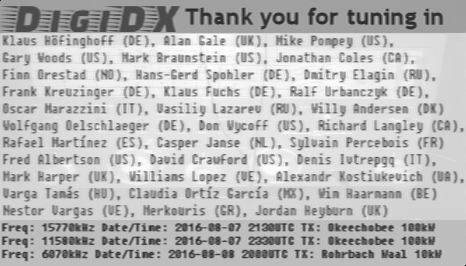
DigiDX concludes
in Olivia 64-2000 mode.........
RSID: <<2016-08-22T20:28Z
OL 64-2K
@ 6070000-1500>>
Thanks to Oscar
Marazzini for the picture of his National NC-190 tube radio
which has used to receive DigiDX.
Send reports to reports@digidx.uk and we
welcome listeners on
our WINB test broadcast. Sign off...
██╗ ██╗██████╗ ██████╗ ██████╗ █████╗ ██████╗ ██╗ ██████╗ ██████╗ ██████╗ █████╗ ███╗ ███╗
██║ ██╔╝██╔══██╗██╔════╝ ██╔══██╗██╔══██╗██╔══██╗██║██╔═══██╗██╔════╝ ██╔══██╗██╔══██╗████╗ ████║
█████╔╝ ██████╔╝██║ ██████╔╝███████║██║ ██║██║██║ ██║██║ ███╗██████╔╝███████║██╔████╔██║
██╔═██╗ ██╔══██╗██║ ██╔══██╗██╔══██║██║ ██║██║██║ ██║██║ ██║██╔══██╗██╔══██║██║╚██╔╝██║
██║ ██╗██████╔╝╚██████╗ ██║ ██║██║ ██║██████╔╝██║╚██████╔╝╚██████╔╝██║ ██║██║ ██║██║ ╚═╝ ██║
╚═╝ ╚═╝╚═════╝ ╚═════╝ ╚═╝ ╚═╝╚═╝ ╚═╝╚═════╝ ╚═╝ ╚═════╝ ╚═════╝ ╚═╝ ╚═╝╚═╝ ╚═╝╚═╝ ╚═╝
|
http://www.kbcradio.eu/
RSID:
<<2016-08-21T
01:30Z
MFSK-32 @
9925000-1500>>
The KBC ship in Harlingen Harbor resplendent in the early morning
sun, August 5 ...
http://www.webcam-harlingen.nl/pages/cameras/willemshaven.php
Please report decode to
themightykbc@gmail.com
██╗ ██╗ ██████╗ █████╗ ██████╗ █████╗ ██████╗ ██╗ ██████╗ ██████╗ ██████╗ █████╗ ███╗ ███╗
██║ ██║██╔═══██╗██╔══██╗ ██╔══██╗██╔══██╗██╔══██╗██║██╔═══██╗██╔════╝ ██╔══██╗██╔══██╗████╗ ████║
██║ ██║██║ ██║███████║ ██████╔╝███████║██║ ██║██║██║ ██║██║ ███╗██████╔╝███████║██╔████╔██║
╚██╗ ██╔╝██║ ██║██╔══██║ ██╔══██╗██╔══██║██║ ██║██║██║ ██║██║ ██║██╔══██╗██╔══██║██║╚██╔╝██║
╚████╔╝ ╚██████╔╝██║ ██║ ██║ ██║██║ ██║██████╔╝██║╚██████╔╝╚██████╔╝██║ ██║██║ ██║██║ ╚═╝ ██║
╚═══╝ ╚═════╝ ╚═╝ ╚═╝ ╚═╝ ╚═╝╚═╝ ╚═╝╚═════╝ ╚═╝ ╚═════╝ ╚═════╝ ╚═╝ ╚═╝╚═╝ ╚═╝╚═╝ ╚═╝
http://voaradiogram.net/
RSID: <<2016-08-20T16:01Z
MFSK-32 @ 17580000+1500>>
Welcome to program 177 of VOA Radiogram from the Voice of
America.
I'm Kim Andrew Elliott in Washington.
Here is the lineup for today's program, all in MFSK32 centered
on 1500 Hz:
1:31 Program preview (now)
2:42 China launches hack-proof satellite*
8:32 Twitter closes terror-linked accounts*
13:59 Why is Washington's subway system falling apart?*
26:40 Closing announcements
29:09 Flmsg surprise (with audio)
* with image
Please send reception reports to radiogram@voanews.com.
And visit voaradiogram.net.
Twitter: @VOARadiogram
VOA NEWS
China Launches Satellite it Hopes Is Hack-proof
Wayne Lee
August 17, 2016
China has launched the world's first satellite into orbit using a
technology to send communications back to Earth that it hopes
will be secure from hackers.
The satellite was launched into space Tuesday from a military
base in Gansu province in the northwest Gobi Desert.
The 600-plus-kilogram satellite, dubbed Micius after a 5th
century B.C. Chinese philosopher and scientist, will circle the
Earth every 90 minutes.
Light particles will be fired at Micius to determine if quantum
physics will permit the secure encryption of long-range
communication.
The official Xinhua news agency said that during the satellite's
two-year mission, it will establish "hack-proof" communications
by transmitting uncrackable keys from space to ground.
"I don't think the quantum communications system is as
impregnable as the Chinese would have us believe," Morris Jones,
an independent Australian space analyst who monitors the Chinese
space program, told VOA's Victor Beattie.
According to the Wall Street Journal, scientists in the U.S.,
Europe and Japan also are trying to exploit quantum physics
technology, which can have military applications. But China has
made the technology a top strategic focus in its five-year
economic development plan released in March, and may have spent
tens of billions of dollars in basic research.
Despite his belief that the technology is not impregnable, Jones
said the application of it in space is a major step forward for
the Chinese.
"The Chinese have one of the top space programs in the world, and
they are still on an upward trajectory," he said. "The Russians
are stagnating and falling backward. If America does not regroup
in the next five years, they will lose ground on China."
Jones predicts the U.S. space program could fall behind China's
within the next 15 years if the U.S. does not commit more
resources to space initiatives.
The lead scientist on the project, Pan Jian-wei at the University
of Science and Technology of China in Hefei, said if this
experiment is a success, China plans to launch a second such
satellite within the next five years to develop a network based
on the quantum technology.
http://www.voanews.com/a/china-launches-satellite-hopes-hack-proof/3469333.html
Image: The world's first quantum satellite is launched in
Jiuquan, Gansu Province, China, Aug. 16, 2016 ...
Sending Pic:248x147C;
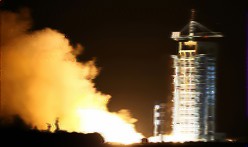
This is VOA Radiogram from the Voice of America.
Please send reception reports to radiogram@voanews.com.
VOA NEWS
Twitter Suspends 235,000 More Terror-linked Accounts
Jeff Seldin
August 18, 2016
Twitter announced that it has suspended an additional 235,000
accounts for promoting terrorism over the past six months.
"This brings our overall number of suspensions to 360,000 since
the middle of 2015," the company said in a statement Thursday.
Twitter says that daily suspensions of user accounts have
increased by 80 percent since 2015. It adds that many of the
suspensions immediately follow terrorist attacks.
The U.S.-based company says it also has made progress in
preventing users who were suspended from immediately returning to
the platform using different accounts and that it "collaborates
with other social platforms in identifying terrorist content."
Despite the progress, many suspended users have found their way
back onto Twitter.
"The numbers include a fairly large number of users who are
repeatedly suspended after creating new accounts, so the number
of accounts suspended does not equal the number of users
suspended," said J.M. Berger, a fellow at George Washington
University's Program on Extremism. "It's not a trivial number."
Berger was the lead author of a 2015 study titled, "The ISIS
(Islamic State) Twitter Census," which found supporters of the
Islamic State (IS) terror group used at least 46,000 Twitter
accounts between September and December 2014, with an average of
about 1,000 followers each.
Twitter has been criticized in the past for not doing enough to
stem the flow of extremist content. Still, Berger credits Twitter
with making progress.
"The current ISIS network on Twitter is less than 10 percent of
what it was in 2014 when we did the census," he said.
In response to crackdowns by Twitter and other social media
networks, IS followers have taken to other, encrypted messaging
apps, such as Telegram and WhatsApp, to communicate with
followers with limited success.
"Telegram allows existing supporters to talk amongst themselves,
but Twitter and Facebook are the main places they can find new
supporters online," Berger said. "ISIS recruiters and
propagandists know this and so they heavily emphasize that
Telegram supporters should be creating new accounts on Twitter."
http://www.voanews.com/a/twitter-suspends-accounts-linked-to-terrorism/3470734.html
Sending Pic:171x171C;

This is VOA Radiogram from the Voice of America.
Please send reception reports to radiogram@voanews.com.
VOA NEWS
Why is Washington's Subway System Falling Apart?
Catherine Maddux
August 16, 2016
A knot of tourists visiting Washington, D.C. crowds the escalator
taking them underground to the subway platform at the L'Enfant
metro station on a hot and humid August day. One man lingers in
front of a circular map of the DC Metro system, trying to sort
out which train goes where. It's close to 4 p.m. and the platform
is starting to fill up with regular commuters.
"Our subway system is so much bigger," said Chris Percival, an
Australian tourist who is standing over the map.
"I mean, it goes so much further outside Sydney — and, I hope you
don't mind if I say it, it's just better," he adds.
"I love the city, though," Percival said as if to apologize for
his assessment of the beleaguered subway system which opened 40
years ago in the nation's capital.
Above ground, a local commuter waits in the heat for her ride
home from work.
"Oh, no. I don't take Metro now. Uh uh. No way," says the
30-something African-American woman. Wearing professional dress
and modest heels, she prefers not to give her name (she doesn't
like being searchable on the internet she says).
So why did she stop taking Metro?
"Oh my goodness, what made me stop? I'll tell you, I used to rush
to my train station, and there was no train, or the train was so
crowded with too many people," she said. "And then you know that
accident that killed those riders in '09 and a lady choked to
death inside a train where smoke got in, right? I said no more
after that one."
DC Metro is in crisis. So much so that over the past few months,
it closed for an entire day to conduct a system-wide emergency
maintenance assessment.
Soon after, the newly appointed general manager announced a
program known as SafeTrack, which has severely curtailed service
to tackle serious safety breaches.
Metro General Manager Paul Wiedefeld's office declined repeated
requests for an interview with VOA.
How did Metro, built in one of the most powerful cities in the
world (it's home to the U.S. Congress and the White House), get
to this point? How did a system that was described by President
Barack Obama at one time as "a great strength of this region"
deteriorate so dramatically?
Why has this public transport system become notorious for
derailments, incidents involving smoke and fire, serious delays,
and the tragic deaths of nine people in a 2009 accident and
another fatality last year when smoke filled a car?
And how is it that other, much older subway systems — the London
Tube, the Tokyo subway — are so much more reliable?
Maintenance
"The warning about maintenance came in the mid-1980s. The 1986
Federal City council report that said that the system was facing
sharply rising higher maintenance costs in the 1990s as
components began to wear out," said Zachary M. Schrag, author of
the 2006 book "The Great Society Subway: A History of the
Washington Metro," and a history professor at George Mason
University.
"That prediction turned out to be accurate."
Schrag also points out that there existed an incompatible
tension: "the need to complete the system as initially envisioned
and to rehabilitate it all at the same time."
DC Metro, run by the Washington Metropolitan Area Transit
Authority (WMATA), was planned all at once, Schrag explains. And
it's a two-track system.
WMATA argues the two-track design makes it much harder to do
maintenance or pull a disabled train off the rails without major
disruptions during daily operations.
But critics counter that the Paris, London and other subways are
also two-track systems, which function much better than DC Metro.
The problem, critics say, is down to management.
DC's subway was also designed without a dedicated source of
funding. WMATA, a collection of representatives from Washington,
Virginia and Maryland, must go hat in hand to Congress to get
funds.
And Congress can be moody, especially in the wake of numerous
system failures and a damning report by the Federal Transit
Agency, rebuking WMATA for failing to implement key safety
measures
"Where you historically have unstable funding and you skimp on
maintenance, which is paramount, you are bound to have big
problems," said transportation consultant Kevin Maher, a former
30-year-long career U.S. diplomat who lives in Tokyo. "[WMATA]
doesn't do regular maintenance."
Different mindset
The Tokyo subway system is one of the world's most consistently
reliable, safe and admired.
VOA Correspondent Steve Herman can vouch for that, having lived
26 years in Asia, mostly Tokyo.
"You cannot underestimate the public mindset about public
transportation in this part of the world," said Herman, who is
now reporting from the State Department in Washington D.C. and
now experiences firsthand the inefficiency of D.C.'s subway
system.
"Over 90 years, incidents on the Japanese system have been rare,"
Herman said. "The Japanese are famous for efficiency in rail
systems because the public mindset is that transportation systems
are a critical part of daily life."
And the Tokyo system is run by a collection of private companies,
not governments, points out Mahrer. He adds those companies
factor in customer welfare and safety as key parts of their
business models.
While the DC Metro, the second largest in the United States, is
clearly in trouble, other American cities are struggling with
serious problems plaguing their public transportation systems.
"Boston has a dedicated funding system," said Schrag. "And it has
billions of dollars in deferred maintenance. New York City has, I
think, tens of billions of dollars of work that it wants done.
You know, Chicago shut down a line."
Having studied transit systems closely over a decade or so,
Schrag has come to this conclusion about American subways:
"Really, it's about the overall lack of investment in
infrastructure."
http://www.voanews.com/a/why-is-washingtons-subway-system-falling-apart/3467585.html
Image: A lone Metro rider sits on a train in Washington's
L'Enfant Plaza Station in this March 2015 photo.
Sending Pic:268x182C;

For more about Washington's crumbling infrastructure, see
VOA NEWS
Authorities Threaten to Close Iconic Washington Bridge
August 14, 2xP
Esha Sarai
http://www.voanews.com/a/memorials-infrastructure-crumbling-in-america-s-capital/3463970.html
Please send reception reports to radiogram@voanews.com.
And visit voaradiogram.net.
Twitter: @VOARadiogram
Thanks to colleagues at the Edward R. Murrow shortwave
transmitting station in North Carolina.
I'm Kim Elliott. Please join us for the next VOA Radiogram.
This is VOA, the Voice of America.
... start
[WRAP:beg][WRAP:lf][WRAP:fn VOA_newscast.b2s]<flmsg>2.0.12
:hdr_fm:21
KD9XB 20161808214941
:hdr_ed:21
KD9XB 20161108175028
<blankform>
:mg:147 <h1><b>Latest VOA Radio Newscast</b></h1>
<audio controls autoplay src="http://www.voanews.com/mp3/voa/english/nnow/NNOW_HEADLINES.mp3">
</audio>
[WRAP:chksum 3C44][WRAP:end]
... end
www.rhci-online.net/radiogram/radiogram.htm
www.rhci-online.net/html/calendar.html



